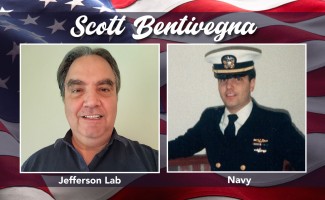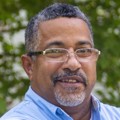“When you see the true dedication and selfless commitment of the service members around you, you can’t help but feel proud to be part of the best service in the world.”
“We didn’t have a base. We had a bay. And our whole mission was to stay hidden,” Scott Bentivegna recalls of his time serving as a submarine officer in the U.S. Navy.
Bentivegna joined the Navy in the early ‘80s straight out of high school, because he believed it was his patriotic duty to join the military and protect his country. He specifically looked at paths where he could pursue nuclear power training. The Navy fit the bill.
Bentivegna lived on a ballistic missile submarine off of Holy Loch, Scotland, for months on end. During the decade that he served, he assumed almost every junior officer role on the submarine possible, including: electrical officer, torpedo officer, sonar officer, communications and others.
“We did drills every single day. We needed to be ready at all times to protect ourselves and the sub in case we were attacked. We could have done those drills in our sleep. Our prime motivation was to protect the health and safety of those around us. And so, we trained,” Bentivegna remembers.
In the Navy, Bentivegna was able to see and do things he says would not be possible in any other civilian job. For example, he has managed an underwater hull inspection of another submarine in transit, shot torpedoes at underwater drones in Canada and the Bahamas, drove the submarine through the Bermuda Triangle and across the Arctic Circle, and participated in dozens of joint exercises with both American and other nations’ forces.
He recalls that working on a submarine is an added layer of complexity, given that everyone is working in such close proximity to one another for long stretches of time. During his service, he learned that each person’s true capabilities and limits far exceed what they think their limits are.
“A big part of Navy and military training is to anticipate, and prepare for, things going wrong in life and how to overcome nearly any adversity. I learned to listen to those around me, and I actively looked for ways to help them maximize their contribution to the community. When you see the true dedication and selfless commitment of the service members around you, you can’t help but feel proud to be part of the best service in the world,” Bentivegna says.
Although much of his time was spent on the actual submarine itself, he was also able to travel the world with bucket list aspirations, such as seeing the Opera House in Sydney, Australia; surfing in Hawaii; and hitting the tourist spots in San Diego, California.
At the lab, Bentivegna is a conventional facilities project manager, where he uses the multitude of skills he learned in the military to oversee the lab’s projects in the Facilities Management & Logistics Division.
Thank you for your service, Scott!
By Rebecca Anderson









































